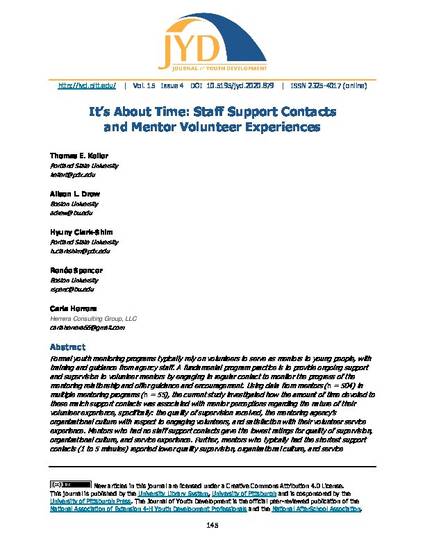
- Social work with youth,
- Youth -- Mental health services,
- Young adults -- Mental health services,
- Social work with children
Formal youth mentoring programs typically rely on volunteers to serve as mentors to young people, with training and guidance from agency staff. A fundamental program practice is to provide ongoing support and supervision to volunteer mentors by engaging in regular contact to monitor the progress of the mentoring relationship and offer guidance and encouragement. Using data from mentors (n = 504) in multiple mentoring programs (n = 55), the current study investigated how the amount of time devoted to these match support contacts was associated with mentor perceptions regarding the nature of their volunteer experience, specifically: the quality of supervision received, the mentoring agency’s organizational culture with respect to engaging volunteers, and satisfaction with their volunteer service experience. Mentors who had no staff support contacts gave the lowest ratings for quality of supervision, organizational culture, and service experience. Further, mentors who typically had the shortest support contacts (1 to 5 minutes) reported lower quality supervision, organizational culture, and service.
Copyright (c) 2020 The Authors
This work is licensed under a Creative Commons Attribution 4.0 International License.
